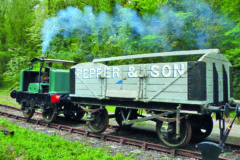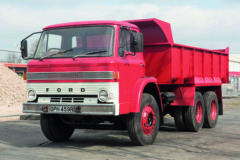The Fordson Major story
Posted by Chris Graham on 4th August 2021
Jonathan Whitlam tells the fascinating Fordson Major story in this, the 70th anniversary year of this influential tractor range from Ford.
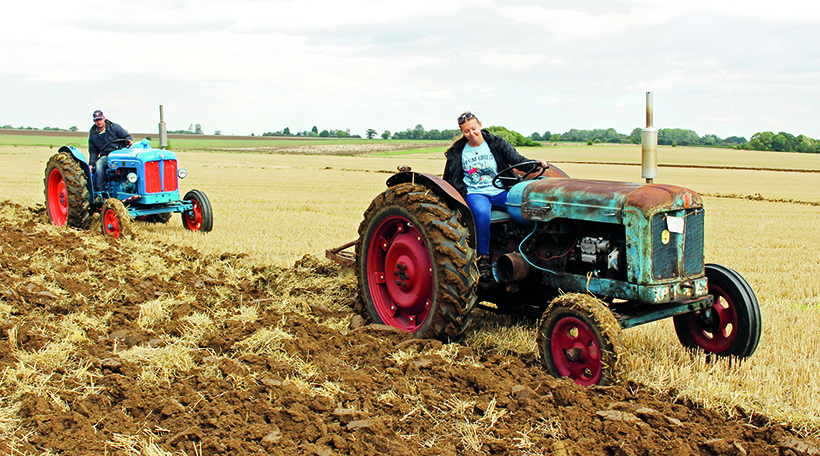
The Fordson Major story: An original New Major is followed down the furrow by a restored Diesel Major – a clear evolution!
In 1951, the Ford Motor Company finally realised a dream first hatched during the final years of the war; to put into production an all-new tractor design, one that would take the Fordson tractor into a new era and finally replace the technology of the original tractor of 1917. Ford’s new machine would keep the name of the current model; the Major, known internally by Ford as the E27N, although to farmers it was always the Major, or the ‘High Henry’, or sometimes something less salubrious when the old side-valve engine wouldn’t start on a frosty morning!
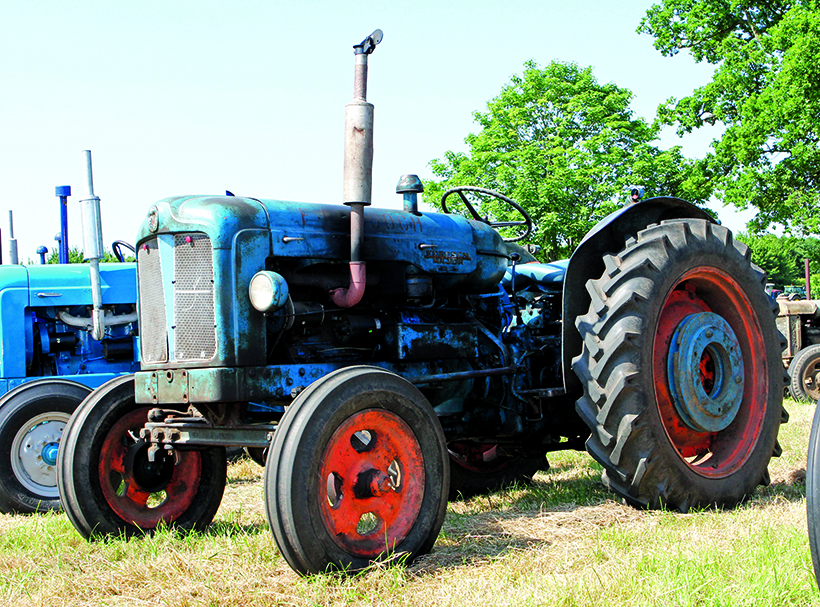
This is a superbly original New Major seen at a show in Norfolk, and wearing its age particularly well.
Stop-gap
This original Major had been a stop-gap measure introduced in 1945 to replace the Fordson Model N or Standard. It had been a great improvement over that machine with its all-new backend, including a much more advanced transmission. The old petrol engine was retained, though, and this would be the Achille’s heel of the tractor, resolved from 1948 if you could afford it, by the fitting of Perkins diesel engines as a factory-fitted option.
With the dawn of the 1950s, the agricultural world was recovering some sort of normality, and the manufacturing industries could now produce more after post-war materials shortages had eased. With the growing prosperity of the new decade, farmers were beginning to re-equip their farms, and mechanisation was now to the fore more than ever before. By the end of that decade, the horse would be almost completely ousted from the farming scene.
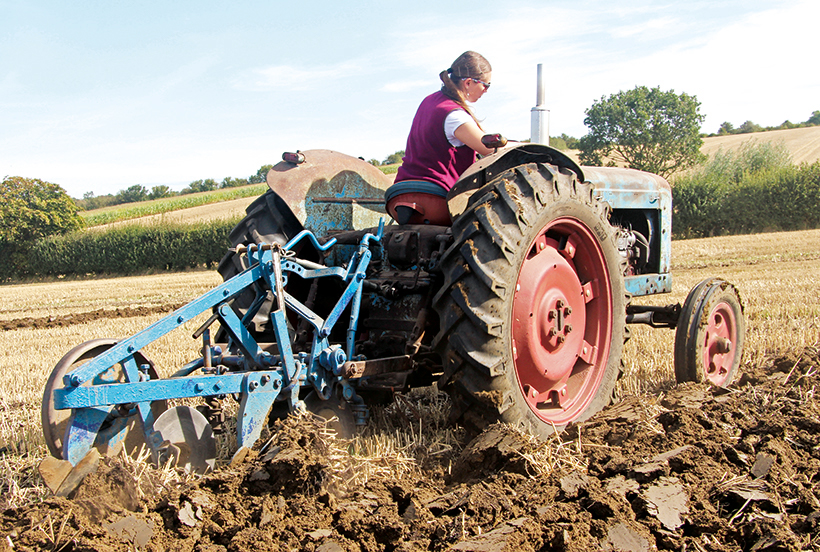
A three-point linkage and hydraulic system was optional at extra cost on the New Major, despite its popularity by this time on most other makes of tractor.
Many farmers were familiar with the Fordson N as their motive power due to it being the only mass-produced tractor available during the war, and those that could, may have upgraded to the Major as finances and availability allowed. This gave Ford a powerful position on Britain’s farms, with its products extremely well known. However, change was in the air, and rivals had made a significant dent in Fordson tractor sales.
The rivals
Back in 1946, Harry Ferguson had put his TE-20 tractor into production at a factory in Coventry. This little machine looked puny next to the Fordson E27N Major being built in Dagenham, Essex. Appearances are often deceptive, and in this case, it was true, the Ferguson System of hydraulic draft control and three-point linkage allowing this little tractor to do as much, if not more, work than the old Major.

The New Major, or E1A, was a big departure from the earlier E27N Major, with sleek styling, better features, and a choice of either TVO, petrol or, as here, diesel engines that were all based on the same block.
The Ferguson TE-20 sold extremely well and was a huge success, becoming a firm favourite with many farmers who saw the advantages of the system, and replaced Fordson tractors with the new grey model. It was probably more often the case though, that farmers bought the Ferguson tractor and then bought a Ferguson plough to go with it, leaving their old Major to do the rest of the work. The reason being that to get the best out of the Ferguson TE-20, you needed to buy all the implements specially built to go with it. This was just a step too far for many farmers, who preferred to keep the money saved to be put to other uses.
Looking dated
The heavier Major and the lighter Ferguson TE-20 were a good pairing. The Major could plod along on heavier tasks and those that didn’t really benefit from sensitive hydraulic needs although, by the end of production, several hydraulic lifts were available for the Major, including three-point linkage-types, making it much more versatile.
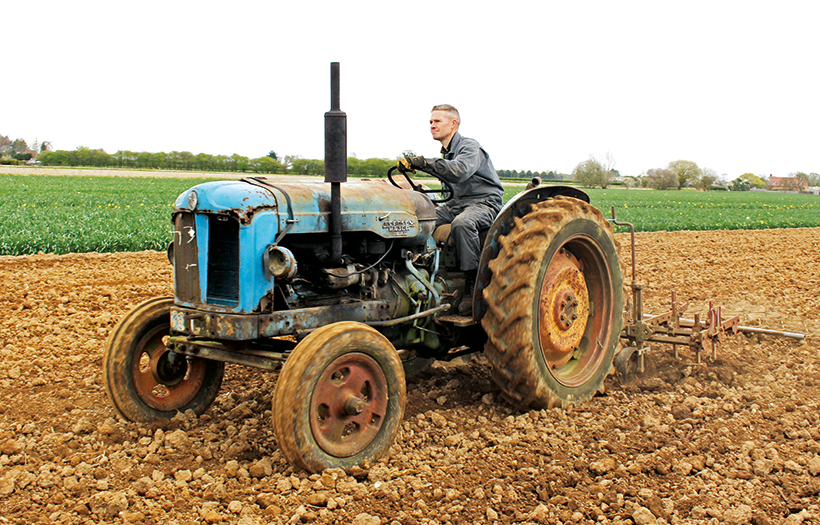
The New Major was such a rugged workhorse that many were flogged almost to the point of death. Showing its years of hard work, this example still runs extremely well, despite its totally unrestored state.
Two years after the launch of the Ferguson TE-20, a perhaps more serious rival was launched. In 1948 the Morris organisation introduced its Nuffield tractor. Its brand-new design not only took its cue from extensive work in finding out what farms required of a tractor, but also featured new styling. The curved tinwork made the Nuffield look as modern as it was, but also made the Fordson Major look as dated as it undoubtedly was, its fuel tank still forming a cover to the engine rather than proper sheet metalwork, for example.
This must have been rather disheartening to the men at Ford they’d wanted to introduce a tractor similar to the Nuffield back in 1945, but materials shortages had prevented it. But a bonus was that the extra time had allowed them to refine what would become a new generation of Fordson tractor.
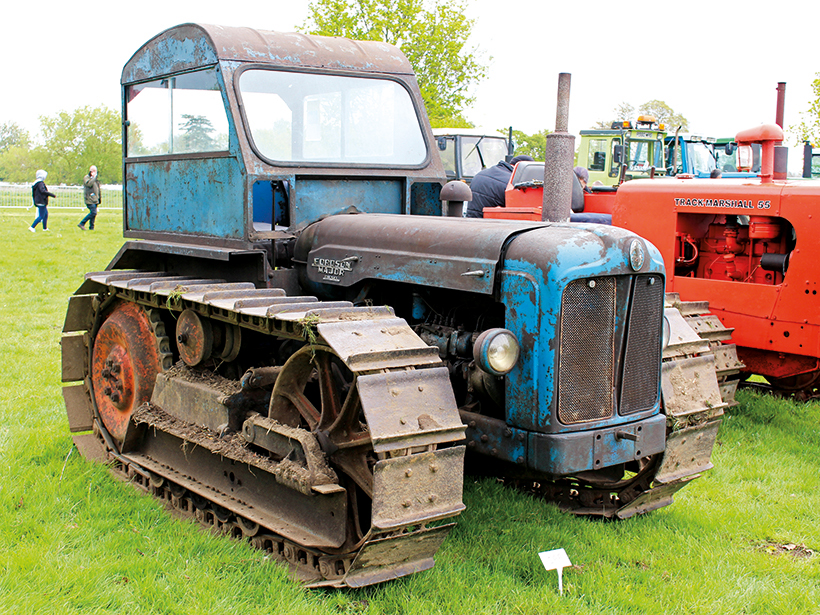
As with the E27N Major, the newcomer was favoured as the basis for many conversions, including the Model Z crawler produced by County Commercial Cars.
New paradigm
When the New Major was finally launched in November 1951, the heart of the new machine was its superb new, four-cylinder overhead-valve engine; the same basic block forming the basis for three different fuel types; petrol, tractor vaporising oil and diesel. The development of this new power unit had begun as early as 1944, when the Model N was still in production.
From the outset, the trio of different fuels was part of the design brief, which was a very advanced concept back then. However, it must be remembered that the engine design process wasn’t just restricted to farm tractors, the idea was to design an entire family of four- and six-cylinder engines for trucks and other applications as well as in tractors.

Externally, the Diesel Major was identical to the earlier version, except for the new badge on either side of the bonnet. Here we see the curve of the opening bonnet, and the fuel tank through which the steering column protrudes.
The prototype
The first prototype engine was on test by 1946, using an E27N Major as the testbed and, as work progressed, a new transmission – based on the E27N’s, but with six speeds available – evolved. The final design was approved in 1950 and, from February 1951, a few pre-production tractors had been built that could then be tested out in the field.
The actual launch of the New Major was a grand affair taking place over three days in November 1951, at Southend-on-Sea. Ford made sure that the press and other officials, from the government to dealerships, were well aware of what the new tractor was all about. It was the 1951 Smithfield Show in December which really saw the new tractor get its proper launch to the farming public though, and full production at Dagenham was up and running by the end of the year.
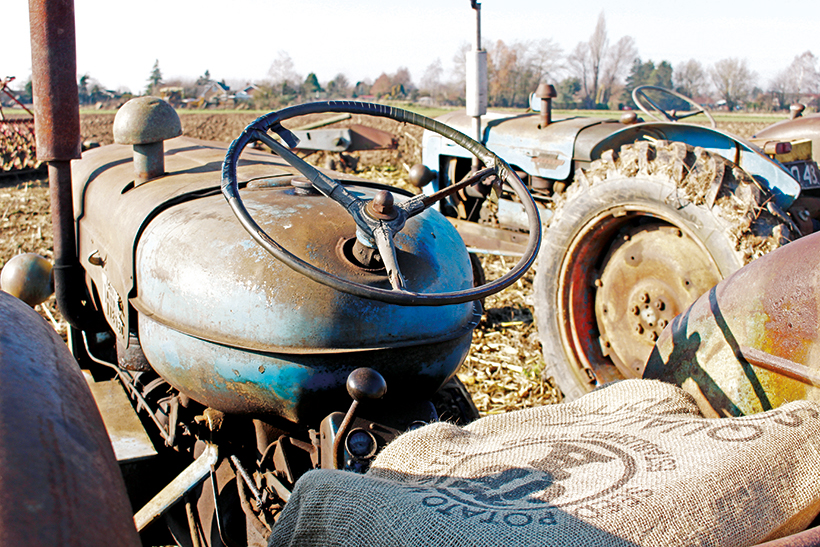
View of the driving area of the Diesel Major, showing the gear levers mounted down below the fuel tank, the steering wheel and the basic instrumentation.
New features
Even a quick glance at the New Major made it plain this was a different machine to the Fordson tractors that had gone before. Its sleek tinwork almost gave a streamlined appearance, something made more prominent by the early tractors having a down-swept exhaust system, leaving the bonnet lines completely clear. This was aided by an air intake placed under the bonnet itself; hinging bonnet sections allowing access to the engine underneath. Even the front cowl was a new design – the removable front grilles being topped by a new Fordson logo of a hand grasping a wheatsheaf.
Unlike the earlier Major, which had been available in standard or row-crop forms, the new tractor came as standard with adjustable front and rear axles. An electric starting facility was also standard, but there was a long list of optional extras that had to be added at further cost. These included a PTO and even a hydraulic lift and linkage, which was perhaps surprising given the popularity of the Ferguson.
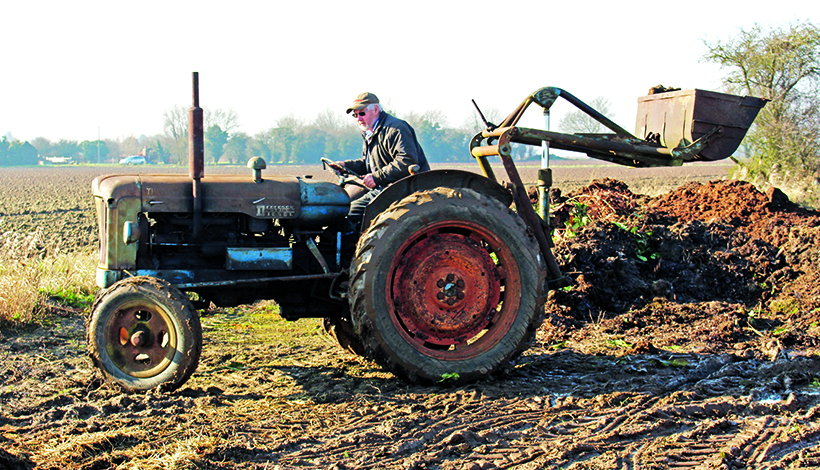
This original example Diesel Major is still put to good use in Lincolnshire, with a Cameron Gardner rear loader.
Popular choice
The main choice a purchaser had to make was whether it was to be fuelled on petrol as the E1AD, vaporising oil as the E1ADKN, or diesel as the E1ADDN. As can be seen, the E27N designation was now replaced by the E1A model description for internal reference. The diesel version was the most powerful at 40hp, and quickly became the most popular of the three. It soon gained an enviable reputation for reliability and ease of use, setting a new standard for multi-cylinder diesel tractor engines. The vaporising oil version was the first to be deleted, but petrol versions remained available throughout production at Dagenham, in only small numbers, and mostly for export customers.
The New Major was a huge success for Ford and effective in winning back sales from its competitors, soon becoming a familiar sight on farms the length and breadth of Britain and further afield. Indeed, it proved so rugged and reliable that some farmers still use their New Majors to this very day.
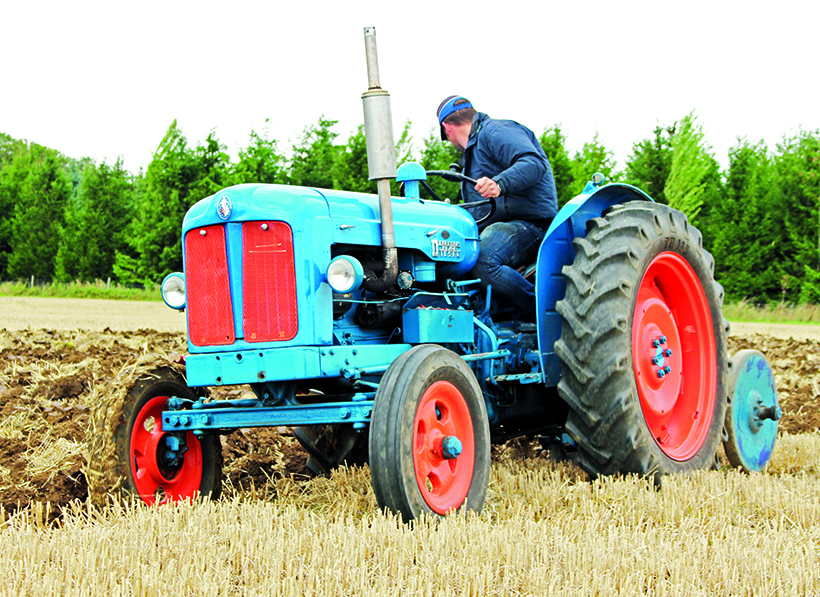
A fully restored Diesel Major showing off its fine lines at a working day.
Diesel Major
As with all things mechanical, the New Major developed as the years of production passed. In 1953, most tractors were now fitted with an upright exhaust and silencer, plus the air intake was now placed through the bonnet to improve the quality of air breathed in. It was also in this year that the Diesel Major name was born, with a special badge gracing the bonnet sides showing just how popular this version had become, putting the other two very much in the shade. Sales continued to grow.
In June 1955, the 100,000th Fordson Diesel Major rolled off the Dagenham production line showing the popularity of this model. It was 1956, though, that saw the biggest mechanical change. This was the year that an optional ‘live drive’ feature became available, allowing for independent running of the power take-off and hydraulic system, even when the clutch was depressed. Previously, all drive to these items had been cut off with the clutch, so this innovation was a big advance, making the tractor much more user-friendly for field operations, especially those requiring a power take-off.

An overhead view of a Diesel Major cultivating shows the distinctive curved bonnet, and the larger, raised air cleaner that became a standard feature.
Despite these upgrades, the Major had remained pretty much as originally launched, and looked very similar. In 1957, it received a more important makeover, with engine changes that allowed it to produce over 51hp, making it an even more versatile performer. Although no external differences were apparent, this became the Mark II Major as far as Ford was concerned.
This state of affairs would only last for some 20 months as, in November 1958, the Diesel Major was replaced by the Mark III Major, otherwise known to all and sundry as the Power Major.
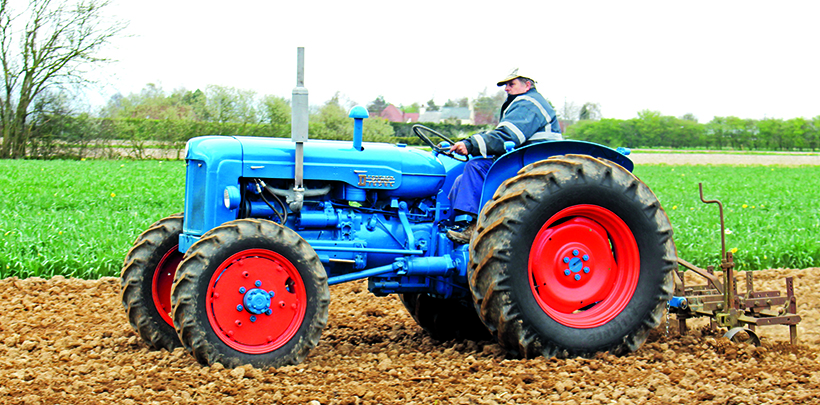
Roadless Traction was also a prodigious user of the New Major skid unit to produce both crawlers and 4WD tractors, such as this machine that’s using a design patented by Selene of Italy.
Very popular
From 1951 to 1958 the Fordson New Major, or Diesel Major as it soon became, was a highly successful model that dominated tractor sales in many countries, especially Britain. It soon surpassed the Nuffield Universal in sales and, although the Ferguson TE-20 was aimed at a slightly different market, it no doubt did also stem some loss of sales until the Fordson Dexta of 1957 began fighting the grey Fergie head-on.
Industrial versions of the Major were also produced, and a huge number of different manufacturers used the Major skid unit to produce other machines including loading shovels, railway shunters and diggers, to name but a few. In agriculture, County Commercial Cars had a great deal of success with crawler versions of the Major, followed by a wheeled machine derived from the crawler range called the Four Drive. Roadless Traction also carried on producing its half-track system for the new Fordson then, later, offered 4WD thanks to an arrangement with Selene of Italy. All these agricultural conversions helped to improve tractive abilities enormously, and buyers could purchase with confidence, as the Major was such a well-proven power unit.
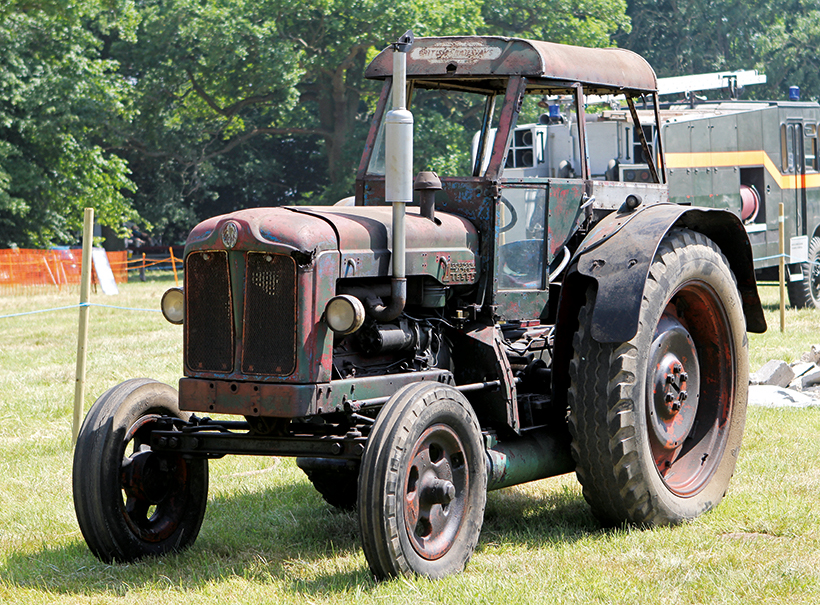
Fitted with a Winsam cab this tractor is a good example of an industrial-type role for the Diesel Major, many of which went into the construction industry and other types of work. This one was owned by British Railways.
Setting the bar
The E1A Major did much to mechanise farms during the 1950s, to meet the growing demand for food, and proved more than sufficiently up to the task. With its splendid engines, particularly in diesel form and rugged practicality, the New Major set the standard for a whole tractor generation. And it didn’t end there.
With the upgrade to the Power Major in 1958, more features were added to the basic E1A design, keeping all that was good but improving certain areas.
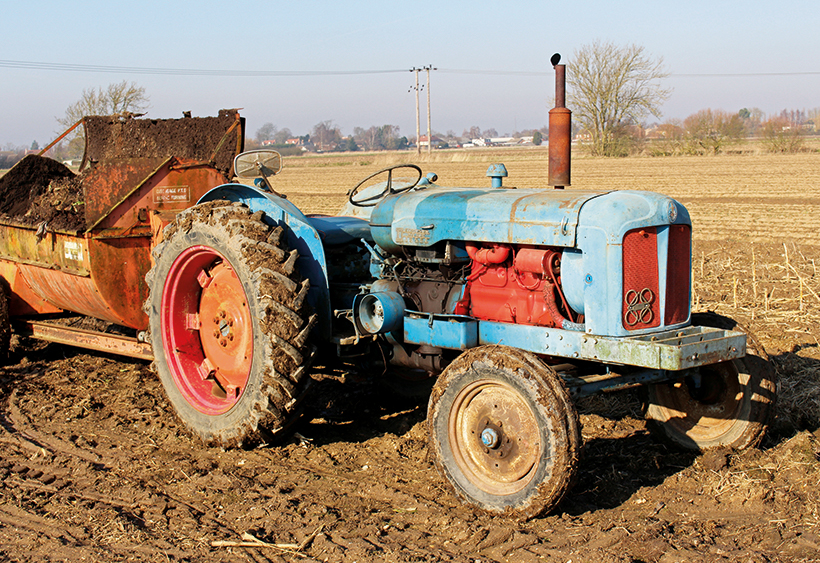
As good as the Ford four-cylinder engine used in the Diesel Major was, years of hard work and often a lack of routine maintenance, led to many Majors receiving an engine transplant in later life. This has happened here, a four-cylinder Perkins diesel engine being inserted in place of the original unit.
This remained true two years later when, in 1960, the Super Major replaced the Power Major. The last incarnation – the New Performance Super Major – arrived in 1963, this being the ultimate evolution of the design first seen in 1951. Amazingly, it was still like the original, except for the branding and extra features of refinement, the tinwork and basic design remaining the same throughout the total 13-year life of the E1A Major family.
Winds of change
By the end of 1964, the Fordson name had been dropped as, following the cessation of tractor building at the Dagenham factory, a brand-new facility was up and running in Basildon in Essex, and with it came a brand-new line of Ford tractors.
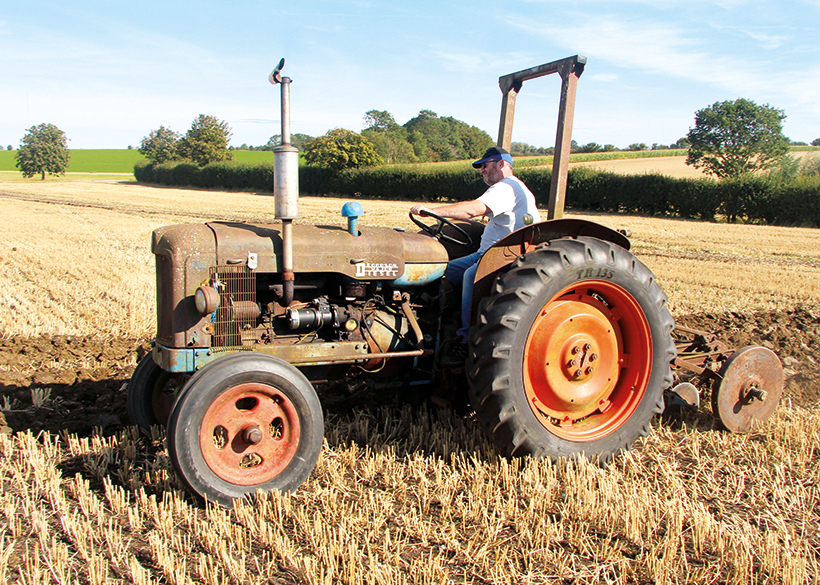
To meet the safety regulations introduced in the UK in 1970, many older tractors, such as the Diesel Major, were retrofitted with a safety frame to provide protection to the driver in the event of a rollover accident.
The Fordson era was at an end, but the Fordson E1A Major family will certainly never be forgotten. With the New Major of 1951, the Diesel Major of 1953 and the Power Major of 1958, Super Major of 1960 and finally the New Performance Super Major of 1963, the E1A family was, without doubt, one of the greatest success stories in tractor history.
References: Ford Motor Company archive films and The Ford Tractor Story Part One by Stuart Gibbard.
For a money-saving subscription to Tractor & Farming Heritage magazine, simply click here



